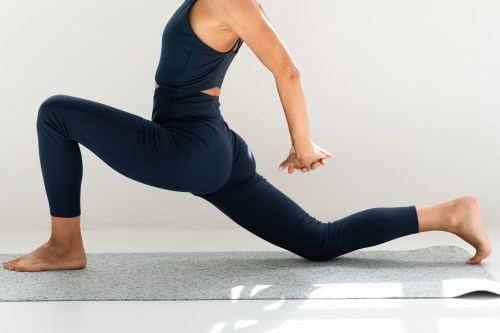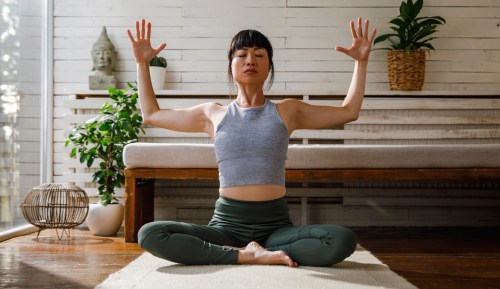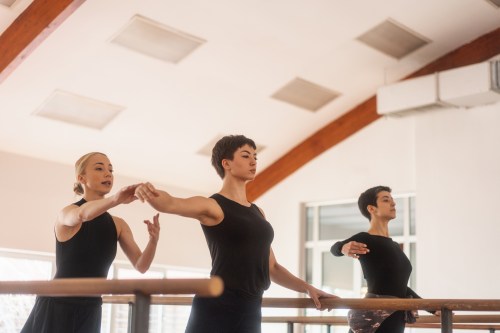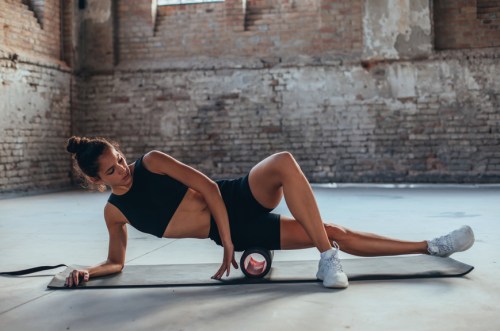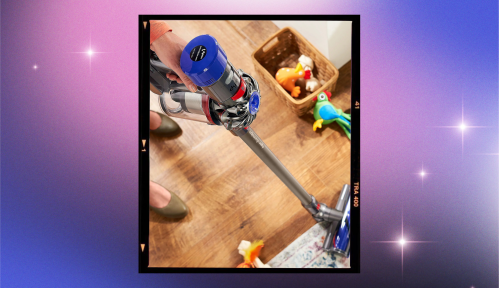Want to stay strong, steady, and mobile for life? It’s time to stop thinking only about forward and backward movements and start training side to side.
Lateral exercises boost your ability to move and stabilize in the frontal plane—a genuine game-changer for longevity. Developing this kind of strength helps prevent falls, improves balance, and keeps your joints healthy as you age (more on this later).
Whether you’re climbing stairs, getting in and out of a car, or just want to feel more confident in your body, adding lateral exercises to your routine can keep you moving with ease for years to come. Here’s your bulletproof guide.
How lateral exercises boost strength
Lateral strength is your ability to move side to side—think stepping sideways, lifting your arms, side-bending at the waist, or balancing on one leg, says certified strength coach Maggie Fazeli Fard.
These movements, known as frontal-plane motions, rely on small but crucial muscles like the gluteus medius (outer hip), adductors (inner thighs), and quadratus lumborum (a lower-back muscle that helps lift your hips).
Neglecting these muscles can lead to poor balance, lower-back pain, and even knee issues, says Fazeli Fard.
Why does lateral strength matter for longevity?
Incorporating more lateral exercises into your routine isn’t just about moving better—it’s about aging better. Stronger lateral muscles improve balance, coordination, and lower-body stability, helping you stay active and independent as you age, says Fazeli Fard.
Want to carry groceries, chase grandkids, or swing a golf club with ease? Here’s why lateral strength matters:
- Balance: Falls are the leading cause of injury and death in seniors, with 1 in 4 older adults taking a spill every year, according to the Centers for Disease Control and Prevention. Strong lateral muscles help keep you steady.
- Coordination: As we age, our brain slows down, affecting movement and reaction time. Lateral exercises help keep coordination sharp and movement smooth.
- Lower-body mobility: Weak lateral muscles lead to stiff joints and poor mobility. Since most workouts focus on forward-backward movement (like running and lunging), skipping lateral work can leave you prone to injuries, says Fazeli Fard.
6 Best Lateral Exercises
Lateral strength is essential for balance, mobility, and injury prevention. But Fard says it’s best to think of these lateral exercises as accessory moves—not the core of your routine.
Sprinkle these moves into your workouts a few times a week (they’re great for warm-ups, pairing with bigger lifts, or conditioning workouts), and you’ll move stronger, smoother, and pain-free in no time.
1. Figure Eights
This low-impact move improves balance, coordination, and control—a perfect warm-up or daily brain-body booster, Fazeli Fard says.
How to do it:
- 1.Stand on your right foot, lifting your left knee to hip height.
- 2.Extend your right arm forward.
- 3.Gently move your left foot and right hand in small figure eight patterns (think: a sideways “8”) concurrently.
- 4.Do 20 reps, then switch sides.
2. Side-Traveling Ape
This primal “animal flow” exercise engages “your lateral system from head to toe,” says Fazeli Fard. Do it in warm-ups or pair it with heavy lower-body lifts.
How to do it:
- 1.Stand with your feet hip-width apart, knees bent.
- 2.Keeping your back flat, lean forward to place your hands on the floor shoulder-width apart, with your left hand directly in front of your right foot.
- 3.Press your hands into the floor and hop your feet to the right, landing softly with feet hip-width apart.
- 4.Bring your hands to the starting position and repeat for six steps, then switch directions.
- 5.Perform three sets.
3. Side Plank March
This move strengthens your hips, inner thighs, lower back, and shoulders while improving overall balance and full-body lateral stability, says Fazeli Fard.
How to do it:
- 1.Lie on your left side with your feet right foot directly in front of your left and your left elbow under your left shoulder, forearm along the floor.
- 2.Press through your left forearm and lift your body so that you're balancing on your left forearm.
- 3.Keeping your hips lifted, bend your right knee toward your chest, then return to start. Bend your left knee toward your chest; return to start.
- 4.Continue “marching” for 8 total reps, then switch sides and repeat.
4. Banded Lateral Walks
This exercise strengthens the small stabilizing muscles around the hips (which are key for lateral strength), says Fazeli Fard. Control is key here—no bouncing.
How to do it:
- 1.Place a resistance band around your ankles.
- 2.Stand with your feet hip-width apart and clasp your hands in front of your chest.
- 3.Bend your knees slightly, and step to the left.
- 4.Bring your right foot back to hip-width slowly, resisting the band's pull.
- 5.Repeat on the right side (returning to start); continue alternating for 10 reps per side.
5. Lateral Lunge
Stronger hips, knees, back? This move can help you achieve all three, targeting the outer hips and inner thighs for improved hip stability and lower-body control, says Fazeli Fard. (Make it harder by holding a pair of dumbbells.)
How to do it:
- 1.Stand with your feet at hip-width distance, toes facing forward. Clasp your hands in front of your chest.
- 2.Shift your weight to the right and step to your right with your right foot.
- 3.With a flat back, bend your right knee and shift your hips back, keeping your left leg straight.
- 4.Keep your toes pointed forward on both feet.
- 5.Press into your right heel to return to standing.
- 6.Complete 8–10 reps, then switch sides and repeat. Do 2–3 total sets.
6. Lateral Step-up
This lateral step-up variation strengthens the outer hips, inner thighs, and lower back, making it a great prehab move for injury prevention, says Fazeli Fard.
How to do it:
- 1.You’ll need a bench or box to complete this exercise.
- 2.Stand next to your bench and place your left foot on the bench, so that your left knee is bent round 90 degrees.
- 3.Keeping your torso upright, press your weight into your left foot and push through your quads and glutes to straighten your left leg and stand on top of the bench.
- 4.Reverse the move, lowering your right foot to the floor with control. Step your left foot down to the floor next to your right.
- 5.Complete 8–10 reps, then switch sides and repeat. Do 2–3 total sets.
Sign Up for Our Daily Newsletter
Get all the latest in wellness, trends, food, fitness, beauty, and more delivered right to your inbox.
Got it, you've been added to our email list.
